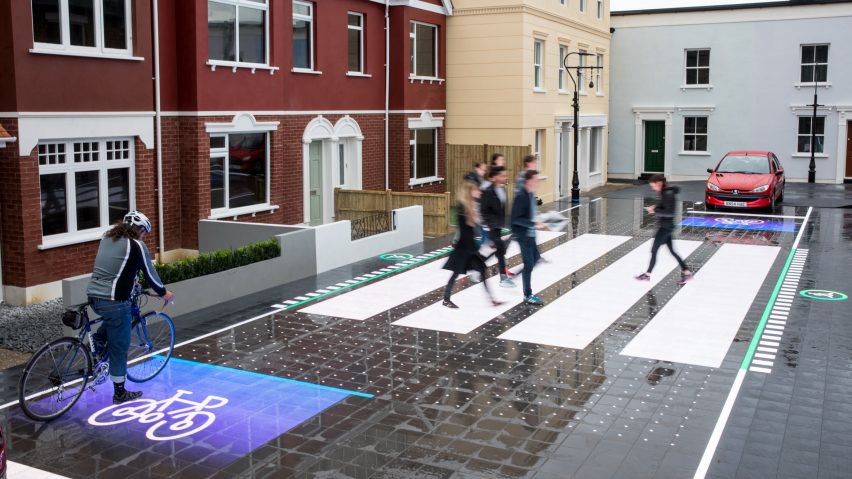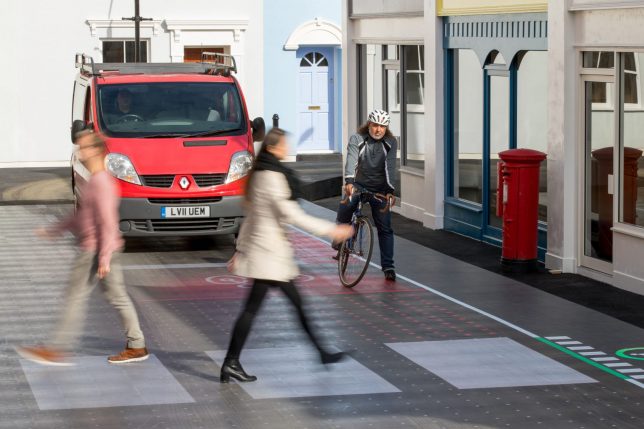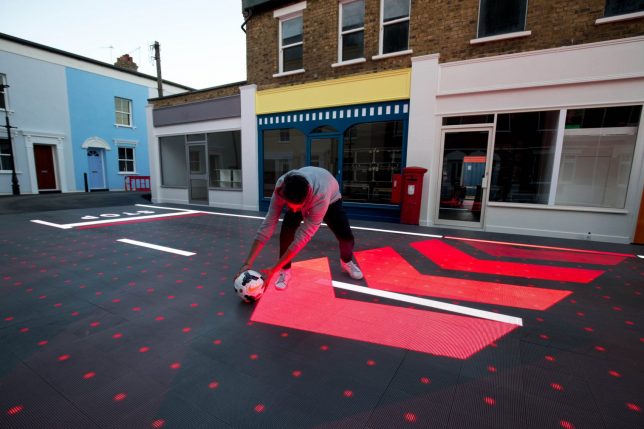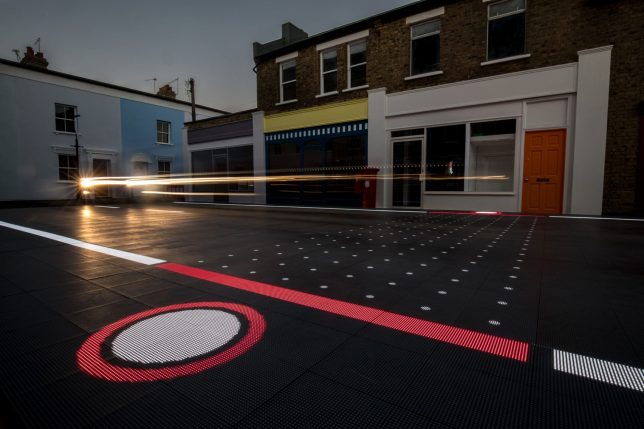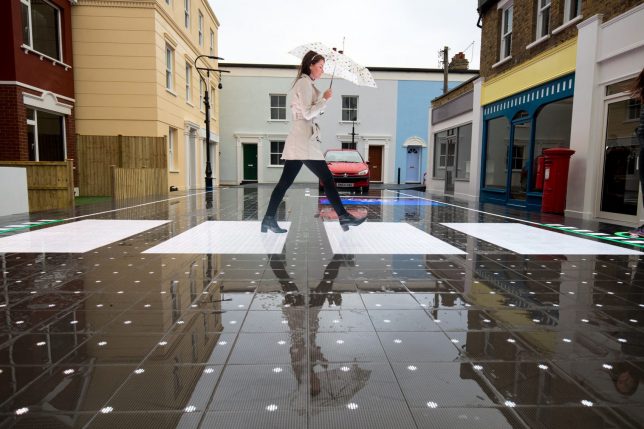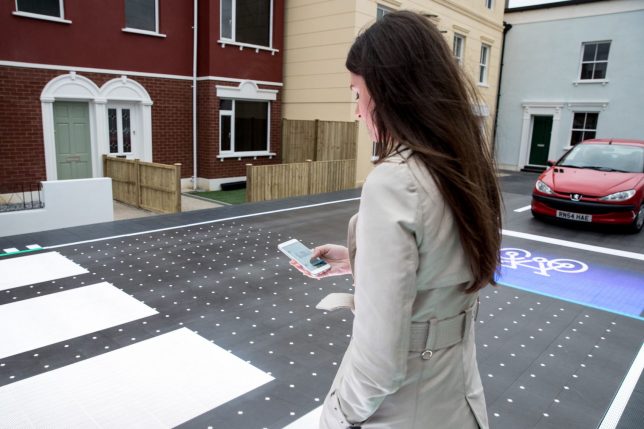Designed to appear and disappear in response to the needs of pedestrians, cyclists and drivers, this pedestrian crossing solution aims to make people safer through dynamic activation.
The interactive surface sits below high-impact plastic panels with lights triggered by monitoring cameras using smart technologies. The cameras identify crossing needs and adjust accordingly, lighting up zebra stripes that can widen at busy times of day (and widening them for particularly heavy foot traffic).
Like more sophisticated versions of traffic signals, the system can adapt and change as needed, instructing drivers when to yield or simply stop altogether. It can also be used to alert people to sudden shifts or unexpected obstacles, like a ball rolling into the street. Illumination levels can also be varied for maximum visibility by day and at night.
A recent full-scale prototype was deployed in West London by Umbrellium, a company founded by Usman Haque, who explains that “The pedestrian crossing that we know hasn’t really be updated since the 1940s, and these days we inhabit our cities in quite a different way. We have mobile phones in our hands that distract us, and our relationship to the city is very different.”
“The pedestrian crossing one of the most complex moments of interaction that almost everyone experiences on a daily basis. It’s that one moment where you’re actually negotiating with others as well as potentially as with big chunks of metal. We’re trying to create pattern sequences that unfold quite calmly so nobody’s surprised, it’s definitely not about distracting people, and the graphics themselves or notions on the surface look very familiar.”
“What we’ve tried to avoid telling people is that you must go here and that this is your area, but instead highlight the relationships between the people that are present in and around the crossing.” The goal is not to solve all crossing and street-related movement problems in one go, but to iterate on the design and figure out what solutions optimize for traffic flow as well as safety.
